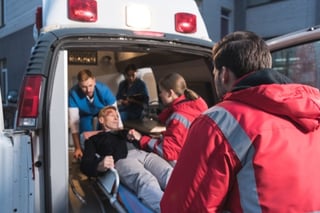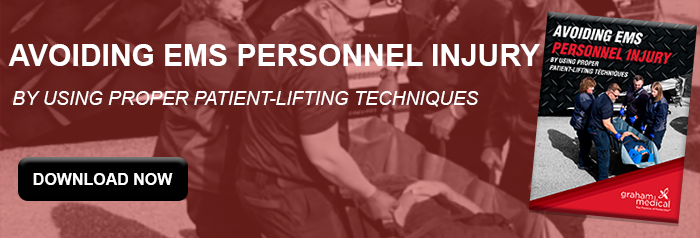 EMS providers help everyone in need. As knowledgeable and caring first responders, EMS providers offer equal care without regard to gender, age, race, or appearance. While this quality of care is the same for all, the protocol for treatment can vary for patients based on these same factors. A common factor that providers need to prepare for is the transport and care of the smallest and largest patients.
EMS providers help everyone in need. As knowledgeable and caring first responders, EMS providers offer equal care without regard to gender, age, race, or appearance. While this quality of care is the same for all, the protocol for treatment can vary for patients based on these same factors. A common factor that providers need to prepare for is the transport and care of the smallest and largest patients.
Transport of Neonates
Newborn infants may be transported to a medical facility for a variety of reasons. Neonates that are more stable may be able to be transported with their mothers, offering additional warmth, comfort, or stability. Neonates that have more serious conditions may require supportive care such as smaller-sized intubation tubing and IV access. Make sure you have the appropriate blankets and supportive supplies to keep these tiny patients warm and supported during transport.
Critically ill and premature neonates may also require specialized care between specialty medical facilities. As this Medscape article indicates, administrators are advised to create a protocol that includes medical directors and physicians for these transports to minimize travel time and maximize the chance of successful outcomes for these tiny patients.
Learn more on Avoiding EMS Personnel Injury By Using Proper Patient-Lifting Techniques.
Transport of Larger Patients
Some patients may be taller or wider than standard-sized medical equipment can accommodate. Keep in mind that many equipment items are designed for average size, and there will always be outliers to this average. Smaller adults may be able to comfortably use some pediatric supplies, adapting to the lifting and transport protocols that your staff already understands.
Larger patients may exceed the size of existing beds or blankets and have more trouble fitting braces than average-sized patients. Compensate for this size difference by doubling up equipment as needed, such as providing additional pillows and blankets. Administrators will also want to train EMS staff in lifting techniques.
Explore lifting devices such as the MegaMover, a device used for heavy lifting (up to 1,000 pounds). This flexible stretcher provides added maneuverability at corners and doorways while providing ample lifting options with multiple handholds. Don't hesitate to use additional staff to lift heavier people to protect both EMS personnel and the patient.
Learn more about specialized patient transport supplies from the experts at Graham Medical. Contact a knowledgeable equipment provider online today.

